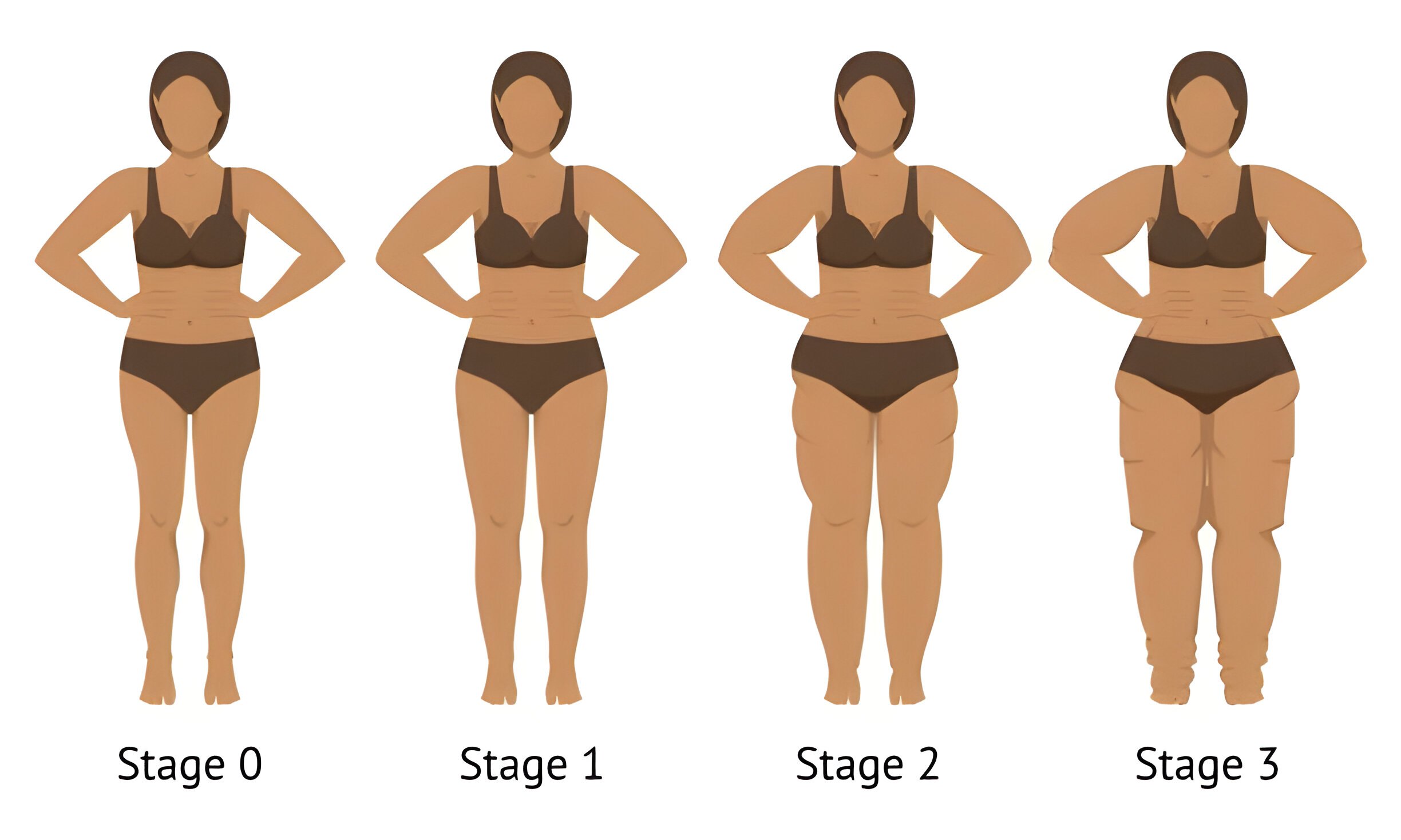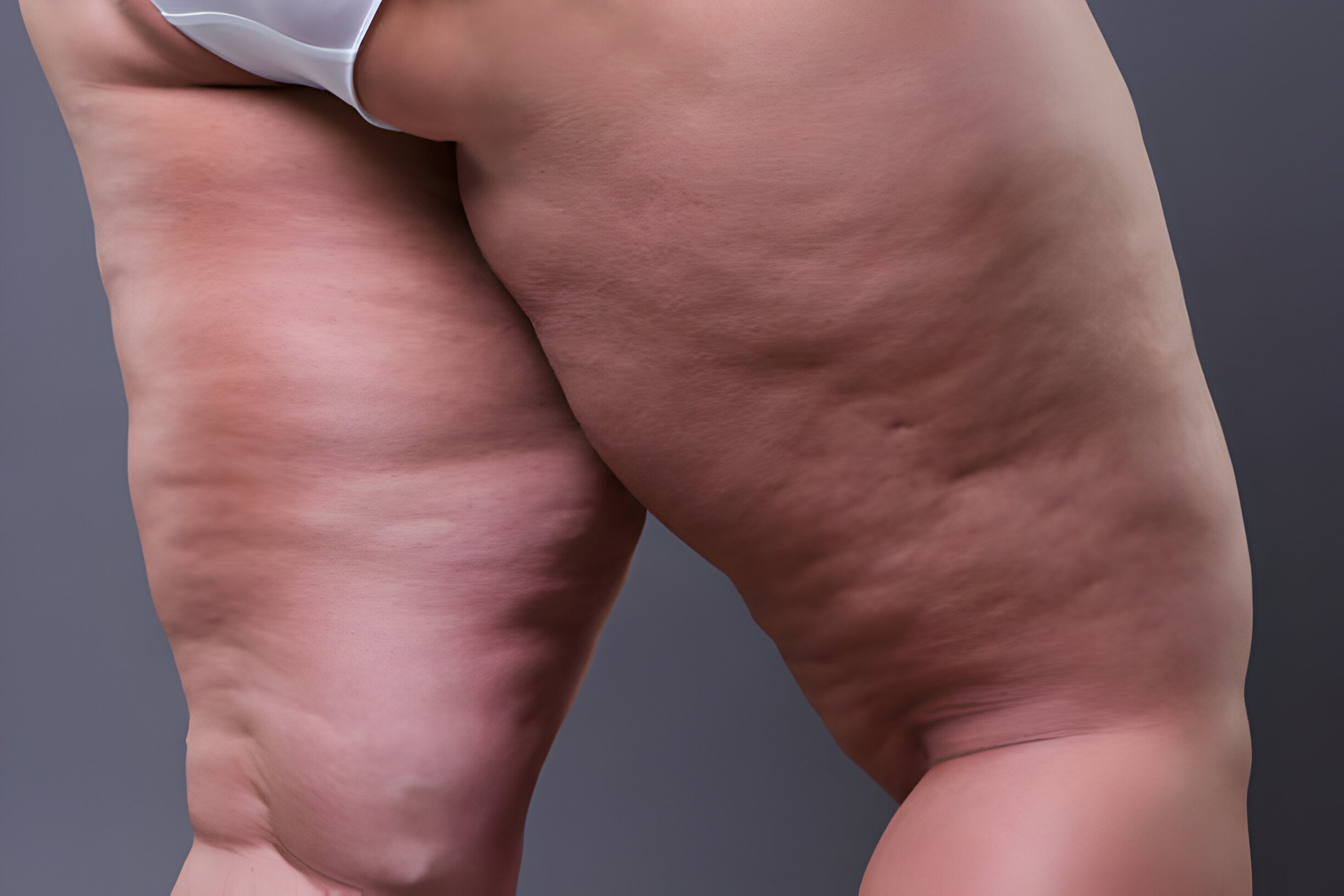Lipedema – Symptoms, Treatment & Causes?

Have you struggled with disproportionate fat accumulation in your lower body, often called “fat legs,” despite a healthy diet and exercise? You may be wondering if it’s lipedema or just fat legs.
Lipedema is a chronic condition mainly affecting women and is characterized by uneven fat distribution in the lower body.
Often misunderstood and misdiagnosed, it can cause significant physical and emotional distress. This blog delves into the symptoms, treatment options, and causes of lipedema, offering a comprehensive overview for those seeking to understand this condition. If you are seeking lipedema treatment Dubai, read on to discover the best available options.
What is Lipedema?
Lipedema, primarily affecting women, involves the accumulation of inflamed fat cells. It causes pain, discomfort, and abnormal sensations, often leading to swollen-looking legs, hips, and sometimes arms while sparing the feet.
Unlike regular weight gain, lipedema results in disproportionate fat distribution in the lower body. It’s often accompanied by tenderness, making activities like leg massages or wearing compression stockings uncomfortable. Hormonal changes, like those during menstrual cycles, can worsen symptoms.
Lipedema tends to run in families, suggesting a genetic predisposition.
Stages of Lipedema

Lipedema typically progresses gradually over time, with several distinct stages:
Lipedema Stage 1: The skin appears normal, but a pebble-like texture can be felt beneath the surface. Pain and bruising are expected at this stage.
Stage 2: The skin becomes uneven, with dimpling that resembles quilted stitching, a walnut shell, or cottage cheese.
Stage 3: The legs have an inflated, rectangular appearance with ample folds of skin and fat. The fat deposits may protrude, making walking difficult.
Stage 4: This stage involves both lipedema and lymphedema, with significant swelling and complications from both conditions.
Lipedema Symptoms
Typical symptoms of lipedema include:
Disproportionate Size Between Feet and Legs: Individuals with lipedema often have a noticeable size difference between their feet, which remain unaffected, and their lower body, which has a column-like appearance. For instance, someone might have a size 8 top half while their lower half could be a size 16.
Pain: Lipedema can cause persistent pain or discomfort when applying pressure. The skin may also bruise easily.
Heaviness and Swelling: A sensation of heaviness and visible swelling in the legs is familiar.
Fat Accumulation: As lipedema progresses, fat accumulates, making the lower body heavier. This fat buildup can eventually extend to the arms.
Loose Skin: Large folds of skin can develop due to the increased fat deposits.
Bumps Under the Skin: Fat deposits may form lumps, giving the skin a bumpy texture.
Fatigue: Individuals with lipedema often experience increased fatigue and may feel unusually tired.
Lipedema Causes?
The precise cause of lipedema remains unknown, but it has a hereditary component, occurring in 20% to 60% of cases within families, suggesting it can be inherited. This condition predominantly affects women and individuals assigned female at birth (AFAB).
Hormonal influences are likely linked to lipedema, as it often begins or worsens during hormonal changes such as:
- Puberty
- Pregnancy
- Menopause
- Periods when taking hormonal birth control pills.
While obesity does not cause lipedema, it is notable that over half of those affected by lipedema have a BMI greater than 35.
Lipedema Diagnosis

Diagnosing lipedema involves a thorough clinical evaluation and medical history review, as there are no specific blood tests or imaging techniques for its diagnosis.
Your healthcare provider will look for key indicators such as symmetrical leg enlargement, pain or tenderness when applying pressure, easy bruising, and unaffected feet.
They may also perform the “Stemmer sign” test, which involves pinching the skin over the second toe; if the skin is thick and hard to lift, it may indicate lymphedema instead of lipedema.
Steps in Diagnosing Lipedema:
Medical History: During the consultation, the physician will inquire about your symptoms, family medical background, and general health status.
Physical Examination: Look for symmetrical swelling in legs, tenderness, and bruising.
Exclusion of Other Conditions: Rule out similar conditions like lymphedema or obesity through additional tests.
Absence of Pitting Edema: Lipedema doesn’t typically cause pitting edema, unlike other conditions.
Pain and Tenderness: Fat associated with lipedema is often painful.
Response to Diet and Exercise: Affected areas don’t reduce significantly with weight loss efforts.
Family History: A family history suggests a genetic link.
Classification: The doctor may categorize based on the severity and distribution of fat deposits.
Diagnostic Tests:
- MRI: Detailed internal body images.
- CT scan: Clear pictures of bones and soft tissues.
- Ultrasound: Uses sound waves for imaging.
- DEXA scan: Measures bone density.
- Nuclear medicine imaging: Detects radiation to produce detailed images.
Lipedema Treatment
While researchers have not yet discovered a cure for lipedema, various treatments can alleviate pain and inflammation. Starting with simple, noninvasive treatments is often beneficial, with the option to progress to more complex methods if necessary.
Simple Lipedema Treatments
Lipedema treatment options may include:
- Exercise: Swimming, biking, and walking can enhance mobility and reduce swelling. Exercising in a pool can also minimize joint stress.
- Anti-inflammatory diet: Adopting a diet that reduces inflammation.
- Heart-healthy diet: This diet may help slow the progression of lipedema, particularly if diagnosed early, though it typically doesn’t reduce lipedema fat as it does with other types of fat.
- Compression stockings: To help manage swelling and discomfort.
- Skin moisturizer: To maintain skin health.
- Medications or supplements: Amphetamines, phentermine, metformin, resveratrol, diosmin, and selenium can aid in reducing inflammation and swelling.
- Antioxidant herbal medicine: To support overall health and reduce oxidative stress.
Noninvasive Lipedema Treatments
Your healthcare provider might recommend noninvasive treatments for lipedema, including:
- Lymphatic drainage massage: A gentle technique involving skin stretching and massage.
- Complex decongestive therapy: This combines massage with a compression wrap.
- Pneumatic compression device: A device worn on the legs to enhance lymphatic drainage and reduce swelling.
Invasive Therapies
- Lipedema Liposuction: This lipedema liposuction procedure can remove fat deposits, improving pain and mobility. Vaser assisted liposuction is preferred as it minimizes the risk of damaging lymph vessels compared to standard liposuction.
- Bariatric surgery: For individuals with lipedema and a BMI over 35, this surgery is recommended to assist with weight management and alleviate symptoms.
Living with Lipedema
Living with lipedema can be challenging, but with proper management and support, individuals can lead fulfilling lives. Education and awareness are crucial for early diagnosis and intervention. Exploring lipedema treatment Dubai options can help individuals manage symptoms effectively and improve their quality of life. Joining support groups and connecting with others with lipedema can provide emotional support and practical advice.
Complications/side effects of the Lipedema treatment
All medicines and herbal supplements can cause side effects. If you experience any troublesome side effects, consult with your provider.
Possible complications from liposuction or bariatric surgery may include:
- Swelling
- Bleeding
- Infection
- Blood clots
How long does it take to recover from Lipedema treatment?
Recovery from liposuction typically takes about four to six weeks. Similarly, after undergoing bariatric surgery, you will require several weeks to recuperate. Refraining from engaging in strenuous activities for six weeks following either procedure is advisable.
Recent Posts
- Tummy Tuck Gone Wrong: Signs, Complications & Treatment November 12, 2025
- How To Get A Better Jawline? November 12, 2025
- Can you breastfeed with implants? October 22, 2025
- Neck Lift in Dubai: The Secret to a Sculpted, Youthful Neck September 26, 2025
- How to Get Rid of Cellulite on Legs? September 10, 2025
- 15 Signs Your Body Is Aging Faster Than You Are August 22, 2025
- Common Problems After Breast Reduction Surgery July 23, 2025
- How to Get Rid of Smile Lines? June 30, 2025
- How Long Do Breast Implants Last? June 25, 2025
- What is a Deep Plane Facelift and its Benefits? June 20, 2025
- Panniculectomy Vs Tummy Tuck? Which One Is Right for You? June 20, 2025
- Droopy mouth marionette lines filler gone wrong – What to do? June 20, 2025
- Do Breast Implants Need to Be Replaced? May 20, 2025
- Teardrop vs. Round Implants: Which Breast Implants Are Right for Me? May 1, 2025
- How to Relieve Back Pain from Large Breasts? May 1, 2025
Consult Hasan Surgery for Lipedema Treatment in Dubai
Discover the best lipedema treatment in Dubai at Hasan Surgery, one of Dubai’s leading plastic surgery clinics, in Dubai Healthcare City (DHCC). Founded and led by Dr. Hasan Ali, a highly regarded reconstructive and plastic surgeon, Hasan Surgery is renowned for its expertise in VASER Liposuction.
Dr. Hasan Ali’s meticulous approach and exceptional patient outcomes have earned him a reputation as a leading specialist in Dubai. Hasan Surgery, a premier facility in Dubai Healthcare City, stands out for its commitment to professionalism, high quality, and safety standards.
Dr. Hasan Ali, the clinic’s founder and practicing surgeon, is widely recognized as an authority in liposuction. The clinic’s dedication to superior surgical results and patient satisfaction distinguishes it in the competitive field of plastic surgery in Dubai.
